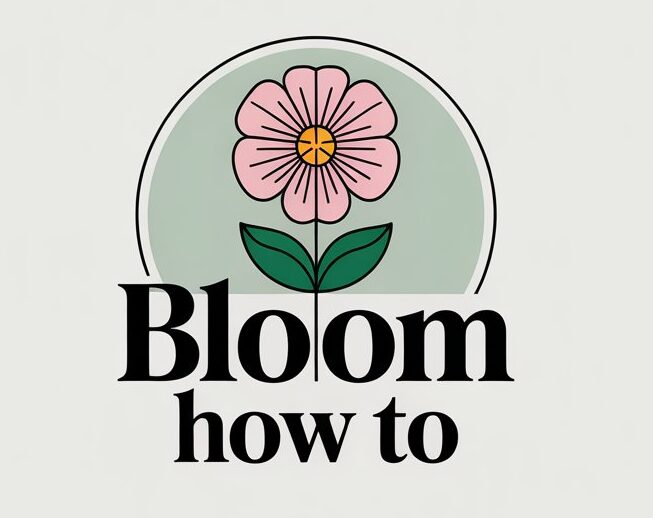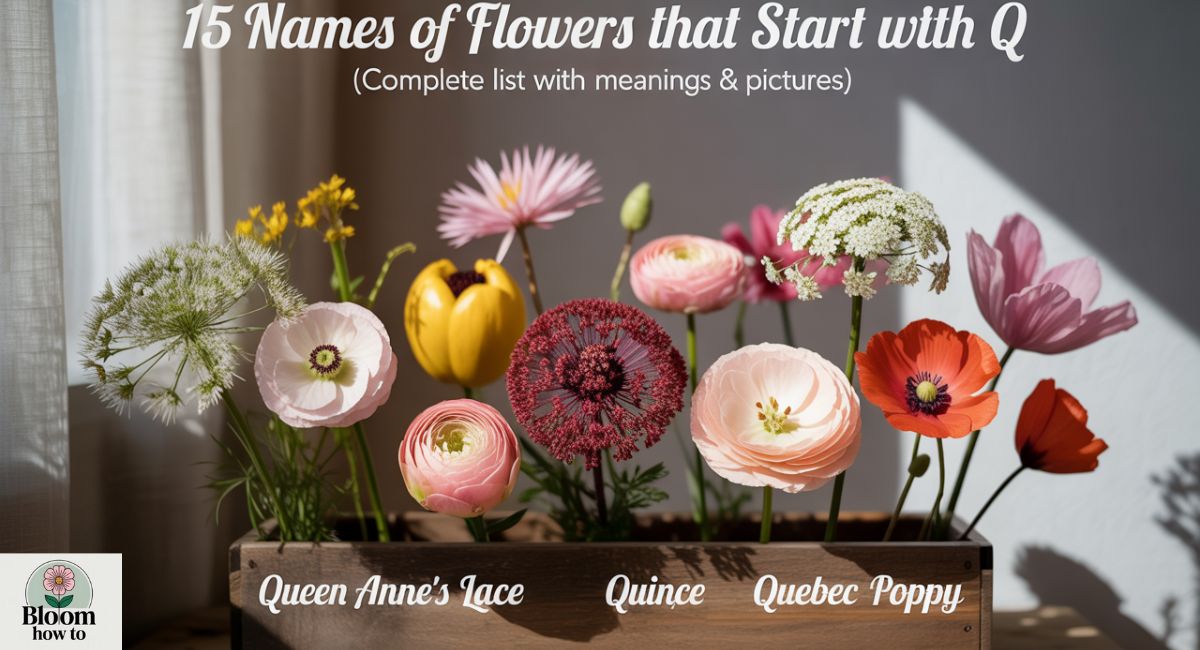When it comes to gardening and botany, few things are more intriguing than discovering plants with unusual names. That’s exactly what makes exploring the 15 Names of Flowers That Start With Q (Complete List with Meanings & Pictures) so exciting. These blooms aren’t just rare; they’re a true treasure for plant lovers in the USA.
From flowers beginning with Q like the delicate Queen Anne’s Lace to rare flowers with letter Q such as the mysterious Queen of the Night, each one carries its own charm. In this guide, you’ll find a complete Q flowering plants list, with care tips and fascinating stories behind these ornamental Q flowers for gardens.
Popular Flowers That Start with Q
In the world of gardening, there are thousands of species, yet rare flowers with letter Q stand out for their charm and originality. These flowers aren’t just plants; they’re conversation starters. Many of them are decorative flowers that start with Q, grown for their beauty in home gardens, bouquets, or landscapes.
Some of the most recognizable names include Queen Anne’s Lace, a wildflower beloved for its lace-like clusters, and Quince tree blossoms and fruit, a spring favorite that offers both fragrance and edible fruit. Other ornamental Q flowers for gardens such as Queen’s Wreath purple flowering vine bring striking displays of color that last all season. For gardeners in the USA, these plants provide something fresh and exotic that sets their spaces apart.
Detailed List of Flowers Starting with Q
Let’s dive into the complete Q flowering plants list, covering their botanical names of flowers with Q, origins, unique traits, and tips for growing them in different U.S. climates.
1. Queen Anne’s Lace
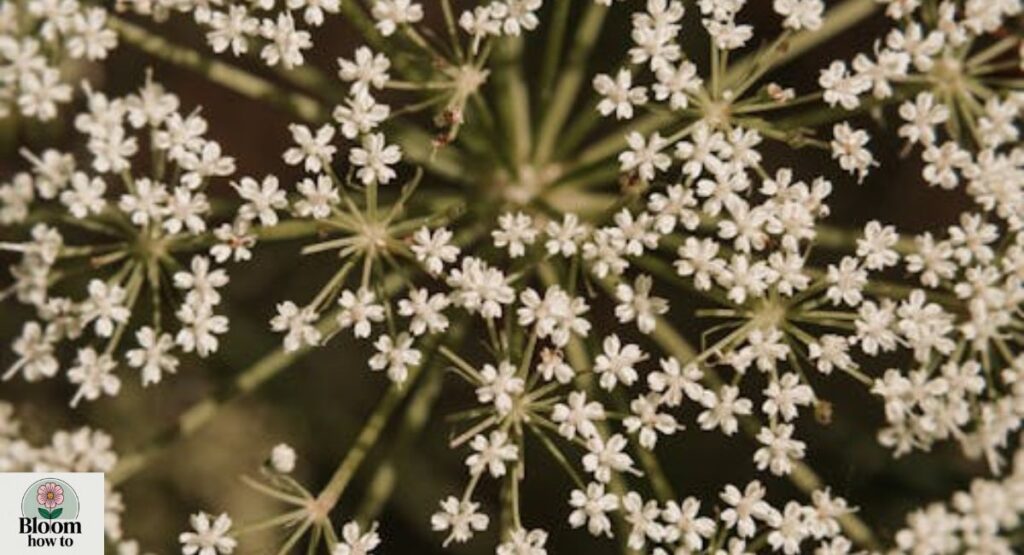
The Queen Anne’s Lace flower meaning is associated with protection and delicate beauty. This wildflower, also known as Daucus carota, is common in North America. It features tiny white blooms clustered together like lace, attracting bees and butterflies. Its root is related to the carrot, making it both useful and symbolic.
In gardens, this plant thrives in full sun and well-drained soil. It’s easy to grow in meadows or as a border plant. However, it can spread quickly, so regular maintenance is necessary. This plant is a favorite for landscaping with rare flowering plants, especially in naturalistic settings.
2. Queen of the Night
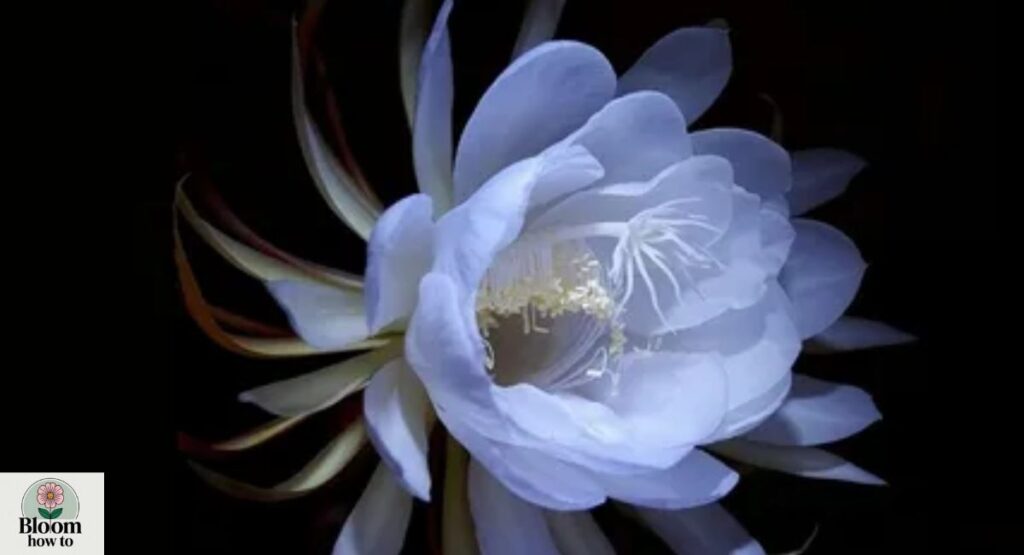
The Epiphyllum oxypetalum night blooming cactus is one of the most dramatic flowers that start with Q. It blooms only at night, filling the air with a sweet fragrance. Native to tropical regions, this plant is often called the “princess of the night.”
The bloom lasts just a few hours, making it truly rare. In the U.S., it’s grown indoors or in greenhouses. Gardeners love it for its mystery and exotic flair. Tropical vs temperate Q flower species like this one bring diversity to collections, especially for those who enjoy unusual houseplants.
3. Quamoclit (Cypress Vine)
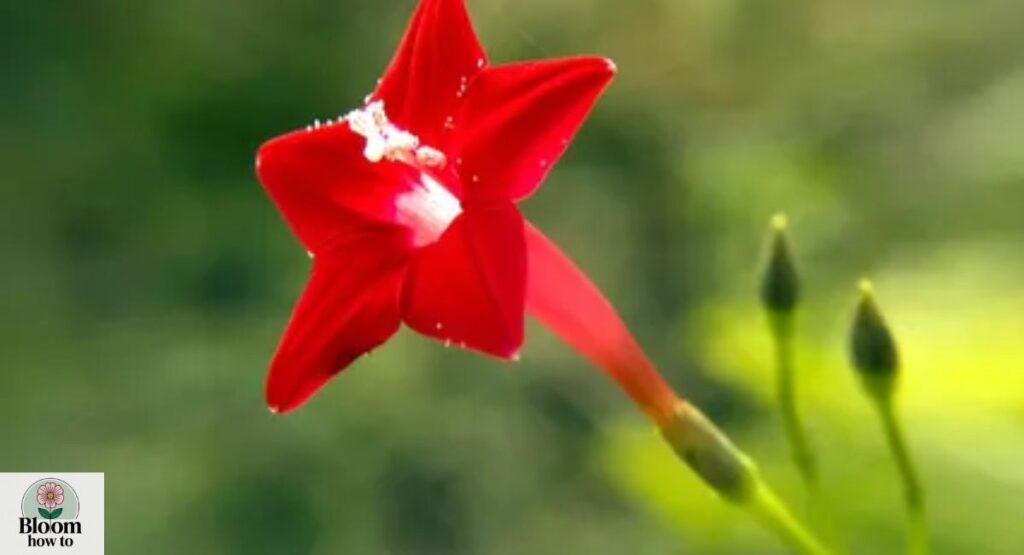
The Quamoclit (cypress vine) climbing plant is famous for its star-shaped red flowers and feathery leaves. This vine is fast-growing and excellent for trellises or fences. It’s native to tropical America but adapts well to U.S. summer gardens.
This species thrives in sunny spots and attracts hummingbirds. It’s a good choice for gardeners seeking gardening plants starting with Q that also serve as pollinator magnets. Because of its unique foliage and bright blooms, it stands out as one of the most unique flowers names starting Q.
4. Quince Blossoms
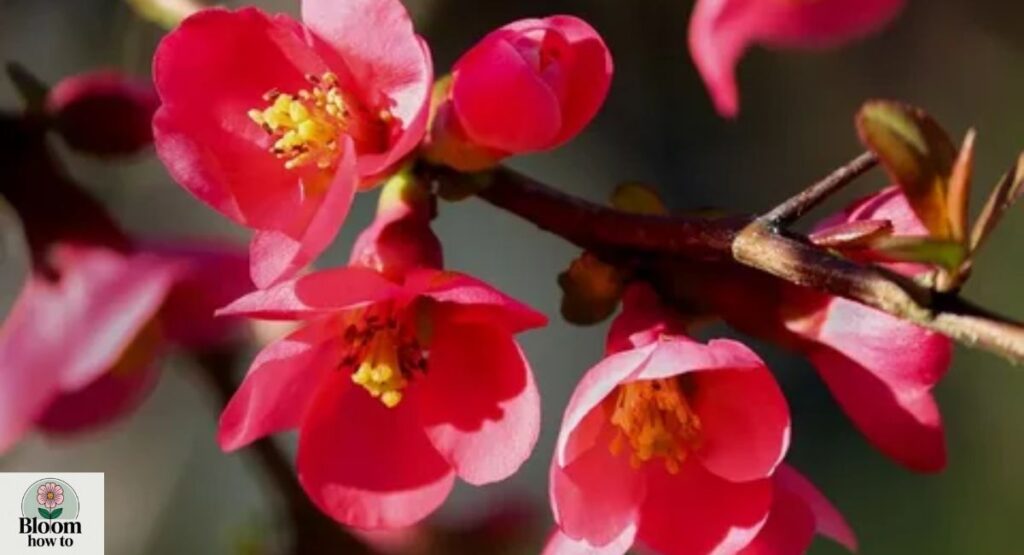
The Quince tree blossoms and fruit provide a stunning spring display. These blossoms are usually pink or red, appearing before the tree leaves emerge. Besides beauty, the quince produces fruit often used in jams and jellies.
In American gardens, quince is planted both as a shrub and ornamental tree. It tolerates cold weather, making it perfect for USDA zones 5–9. Gardeners value it not only for its flowers but also as part of their shrubs and trees starting with Q collection.
5. Queen’s Cup
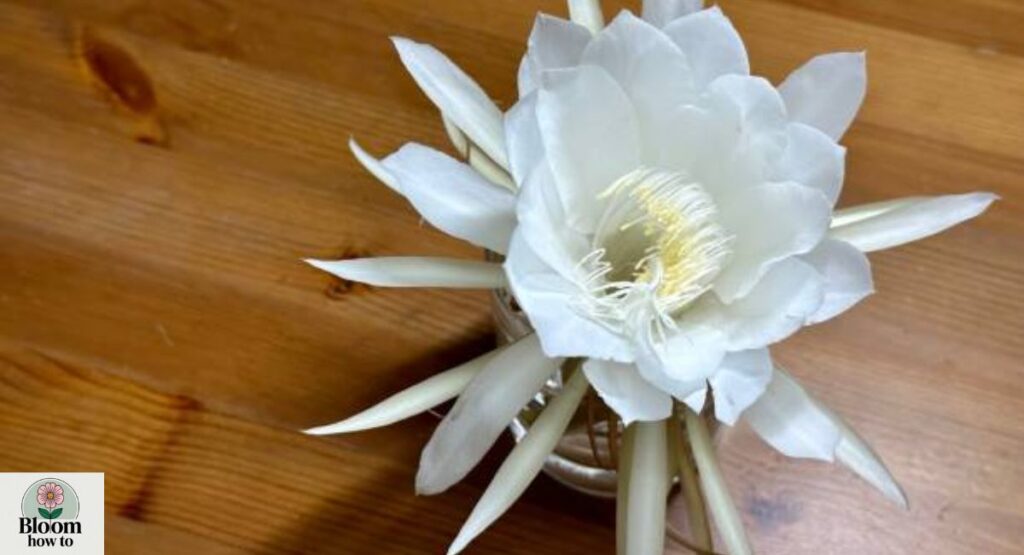
Known as Clintonia uniflora woodland plant, the Queen’s Cup grows in shaded forests of North America. Its delicate white blooms make it a favorite among hikers and nature enthusiasts. This wildflower prefers moist, rich soil and shady conditions.
Though it’s rarely cultivated, the Queen’s Cup has a quiet beauty. Gardeners who specialize in wildflowers that start with Q or enjoy native plant landscaping often seek it out. Its rarity makes it especially treasured.
6. Queen’s Tears
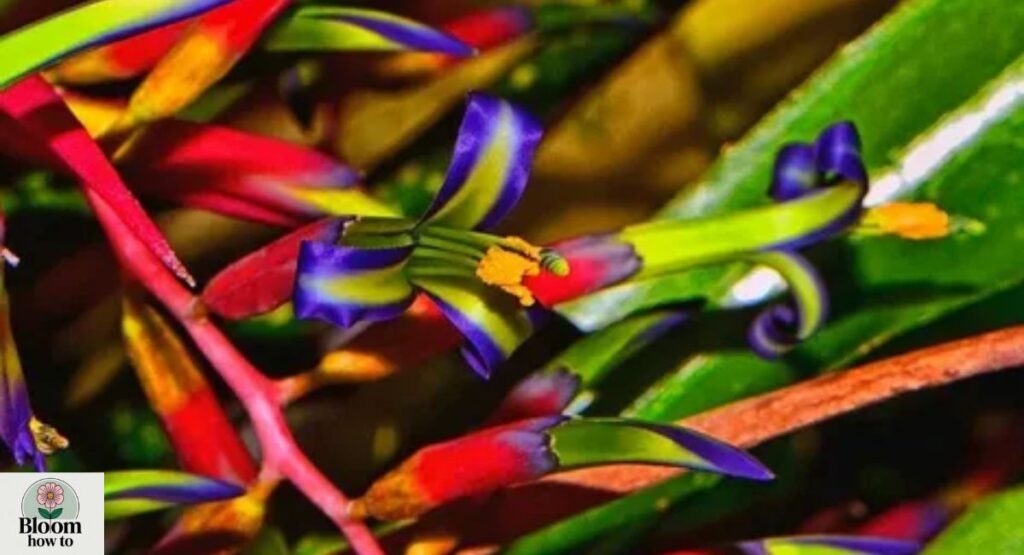
The Billbergia nutans bromeliad care plant is popularly called Queen’s Tears. This tropical plant has pendulous blooms in pink, blue, and green shades. When moved, the flowers release nectar, as though the plant were crying—hence the name.
In U.S. homes, this plant is often grown indoors. It prefers indirect light and well-draining soil. Among exotic flowers starting with Q, Queen’s Tears stands out as both beautiful and symbolic.
7. Queen’s Wreath
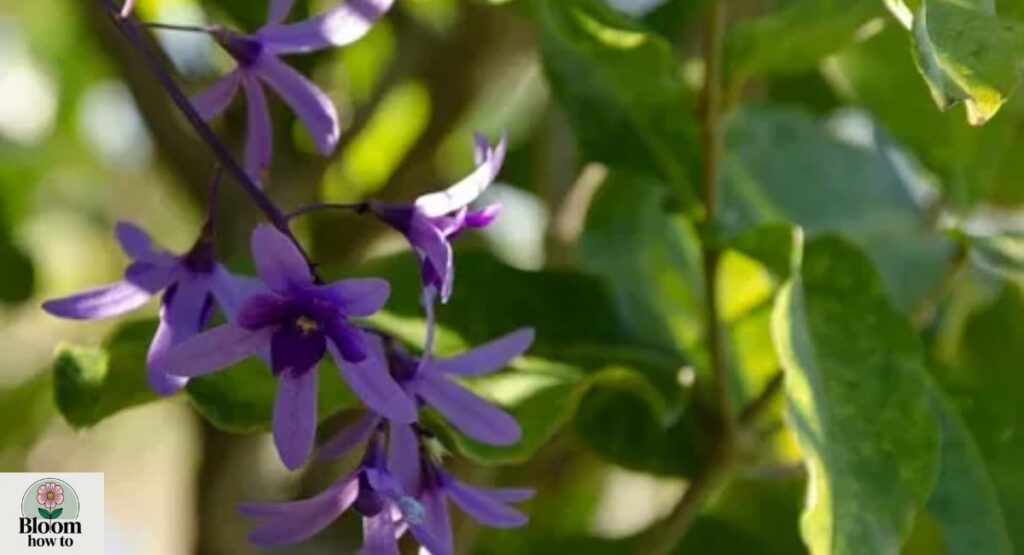
The Queen’s Wreath purple flowering vine is native to Mexico and Central America. Its cascading clusters of purple blooms resemble wisteria. Known as Petrea volubilis, this vine is popular in warm U.S. states like Florida and Texas.
It’s ideal for fences, pergolas, or garden arches. In landscaping, it serves as one of the most ornamental Q flowers for gardens, admired for its long-lasting blooms and ability to attract pollinators.
8. Queensland Firewheel Tree
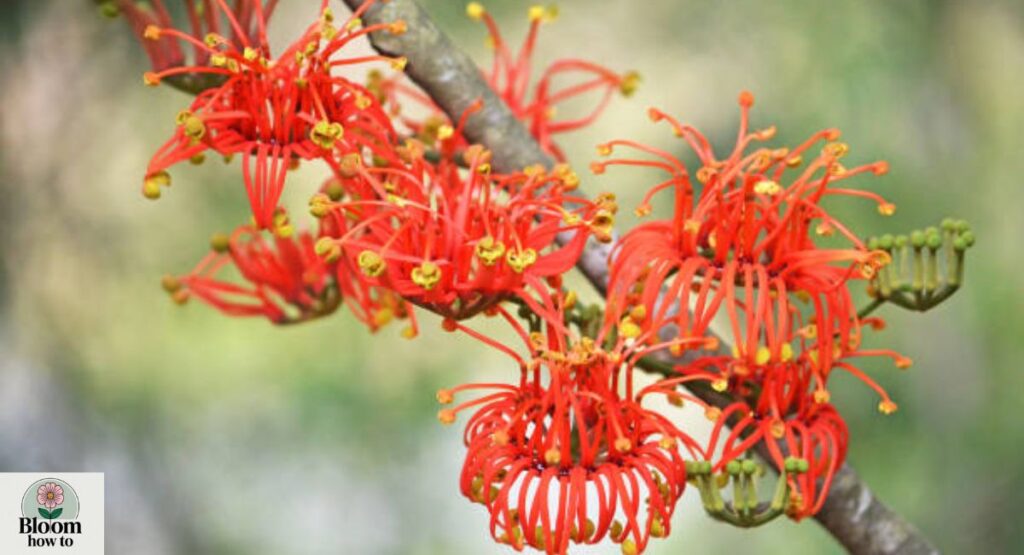
The Stenocarpus sinuatus ornamental tree is called the Queensland Firewheel Tree. It features bright red, wheel-like flower clusters that bloom in summer. Native to Australia, it’s a spectacular addition to large gardens.
This tree grows best in frost-free climates like southern California. It’s also valued in urban landscaping. Among unusual flowers names with Q, this one stands out for its vibrant design-like blossoms.
9. Quaker Ladies
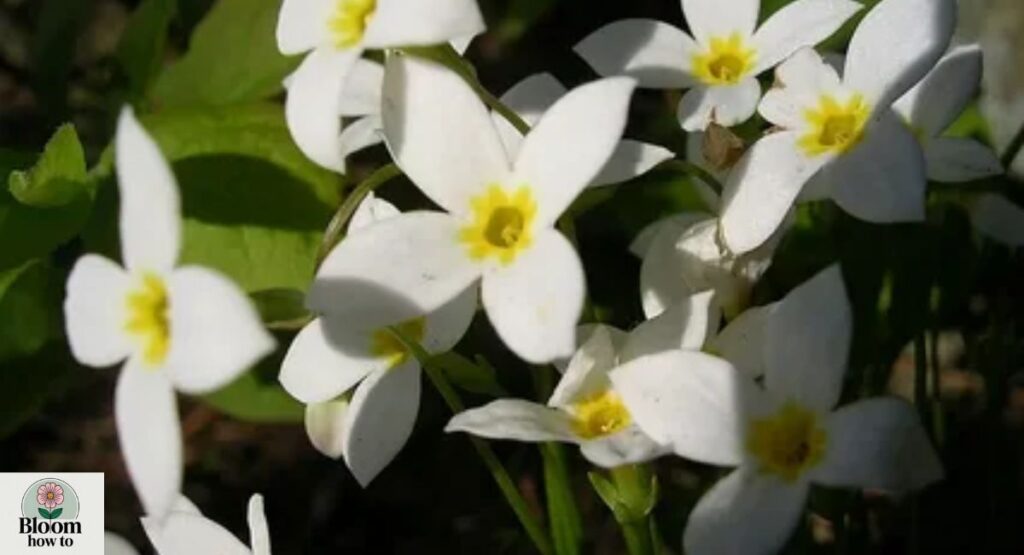
The Houstonia caerulea bluets groundcover is commonly called Quaker Ladies. These tiny, light-blue flowers cover fields and lawns in spring. They thrive in U.S. meadows, woodlands, and even rocky soils.
As wildflowers that start with Q, Quaker Ladies symbolize humility and simplicity. They’re often used in natural landscaping because they spread gently without overwhelming other plants.
10. Queen Fabiola
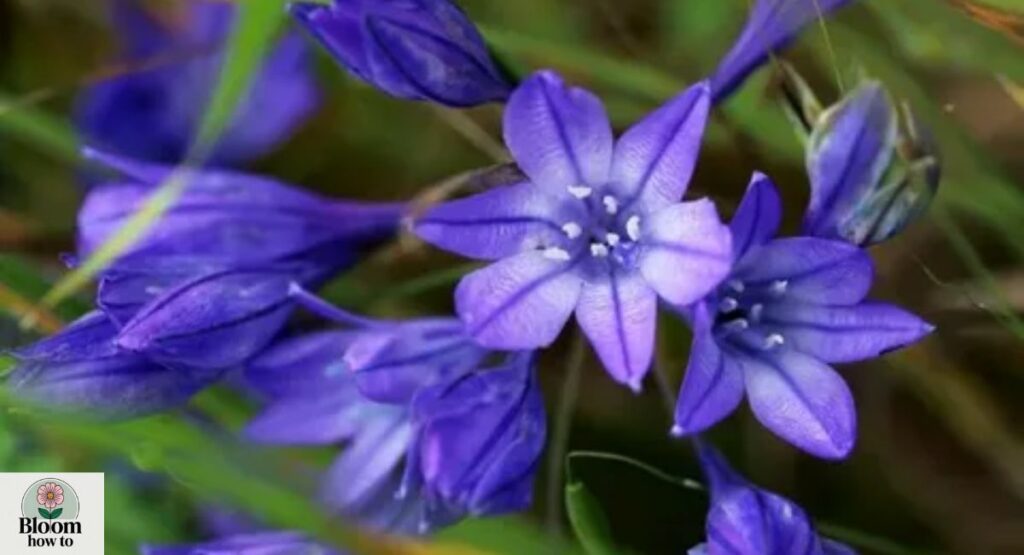
The Triteleia laxa Queen Fabiola bulb planting is a striking flower native to California. It produces star-shaped purple-blue flowers, perfect for cutting gardens. Gardeners often grow them in groups for maximum effect.
Blooming in late spring to early summer, this plant is drought-tolerant. It’s perfect for shade-loving vs sun-loving plants collections since it adapts well to different light conditions.
11. Queen’s Crape Myrtle
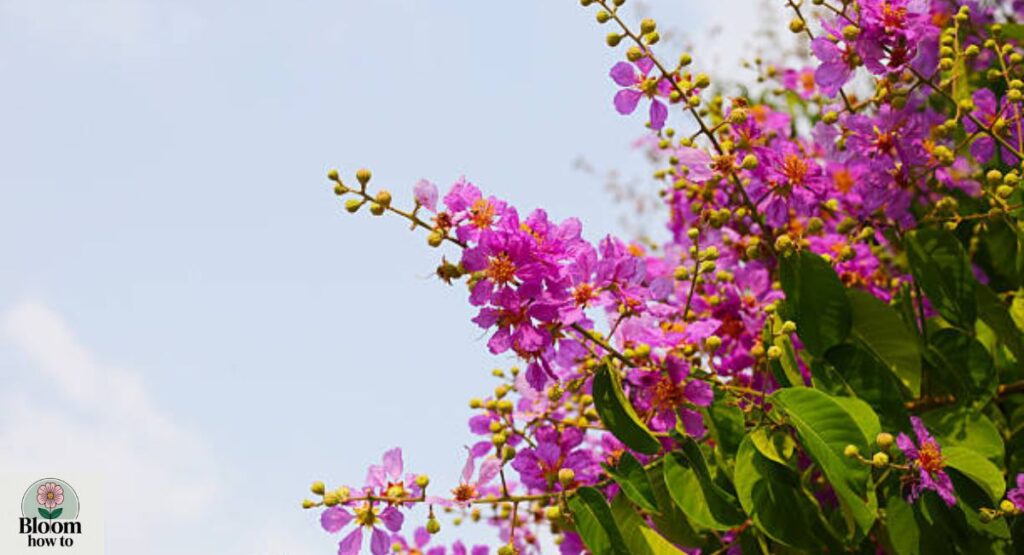
The Lagerstroemia speciosa tropical flowering tree is known as Queen’s Crape Myrtle. Native to Asia, it has large, colorful blossoms in shades of pink and purple. In the U.S., it thrives in warm states.
It’s used in both residential and urban landscapes. With proper gardening care tips for Q flowers, this plant provides years of summer beauty. It’s among the most valuable decorative flowers that start with Q for American gardeners.
12. Quamash
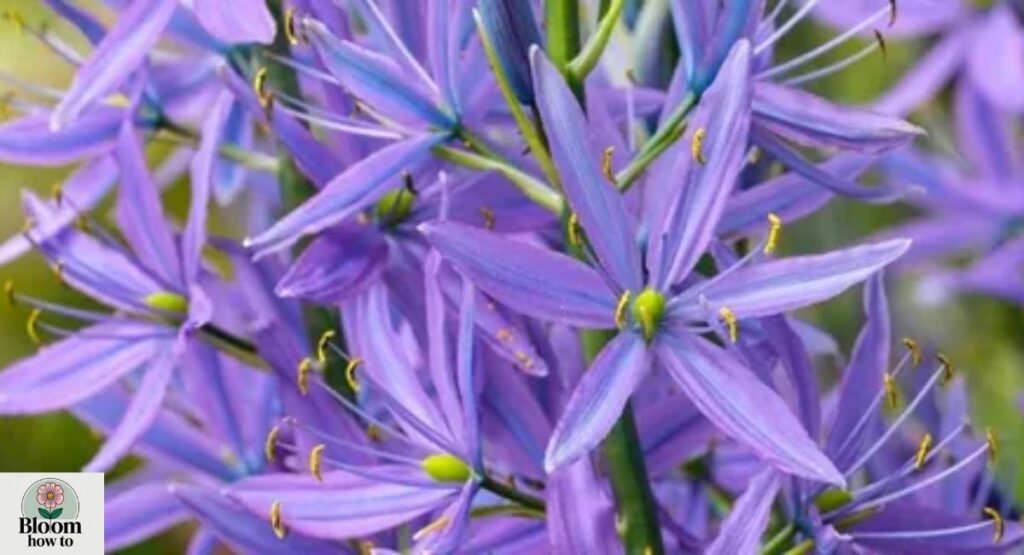
The Camassia quamash wildflower meadow plant is famous for its historical use by Native American tribes. They harvested its bulbs as a food source. Today, it’s admired for its star-shaped blue flowers.
Quamash prefers moist meadows and cool climates. It’s often included in native landscaping projects, serving as one of the most meaningful wildflowers that start with Q in the U.S.
13. Queen Red Lime Zinnia
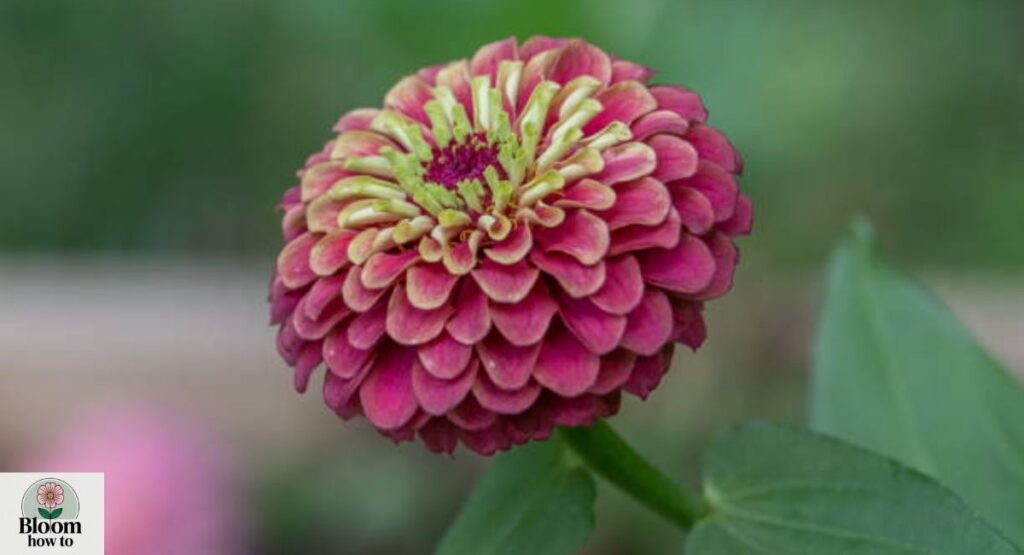
This zinnia variety features a unique red-green gradient, making it one of the most unusual flowers names with Q. Native to Mexico, it’s easy to grow in U.S. summer gardens.
Because of its resilience, it’s often planted in mass displays. The flower bloom times (spring, summer, fall) make it highly versatile for different gardening styles.
14. Queen Lily Ginger
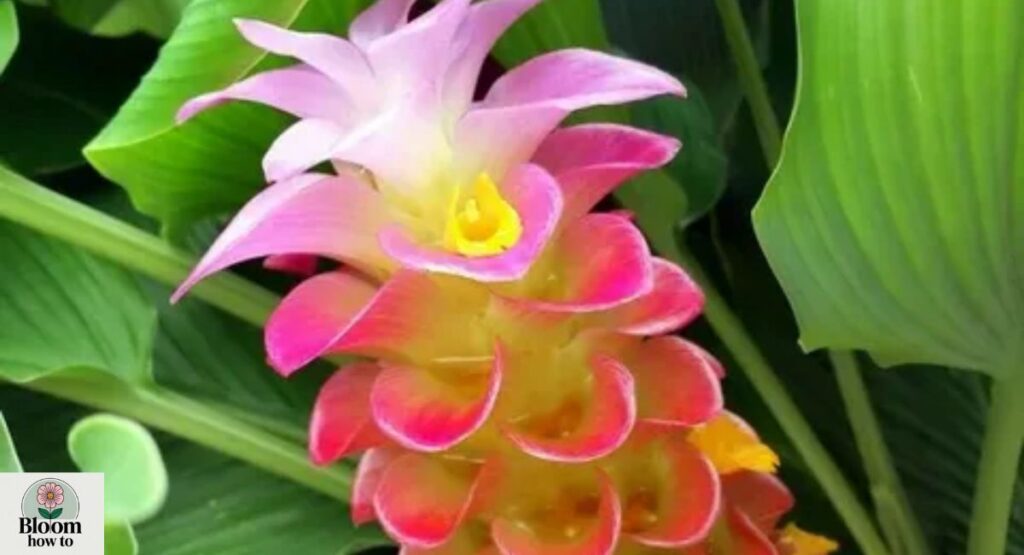
The Curcuma petiolata, or Queen Lily Ginger, is a tropical flower with lush pink bracts. It’s valued in floral arrangements and as a container plant.
In the U.S., it grows best in humid regions. Gardeners admire it for its tropical vs temperate Q flower species contrast, bringing a hint of the tropics to American yards.
15. Queen’s Crown
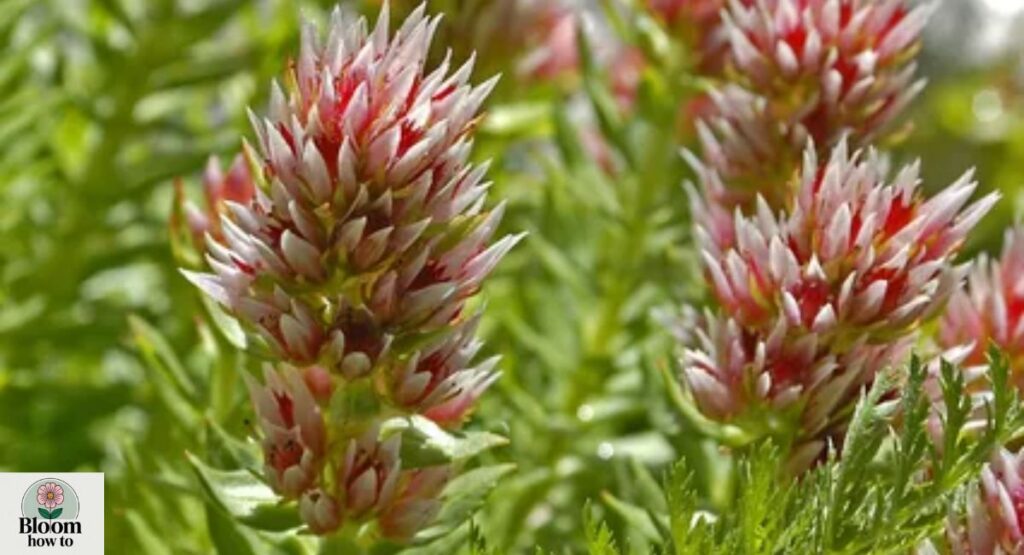
The Rhodiola rhodantha, or Queen’s Crown, is a perennial found in the Rocky Mountains. Its pink-red flowers are hardy and adapt to high altitudes.
This plant is especially known for its medicinal uses. In gardens, it thrives in rocky soils, making it one of the toughest gardening plants starting with Q available.
Rare and Exotic Q Flowers
Not all Q flowering plants list entries are common. Some are rare gems grown by collectors or serious gardeners. The Epiphyllum oxypetalum night blooming cactus, for example, is prized for its fleeting bloom. Similarly, Stenocarpus sinuatus ornamental tree dazzles with unusual fiery wheels of red flowers.
These exotic flowers starting with Q often need special care, such as controlled temperatures, extra humidity, or unique soil types. For gardeners in the U.S., they’re often grown indoors or in conservatories. Adding these rare species gives a garden an edge, transforming it into something extraordinary.
Symbolism and Meanings of Q Flowers
Every flower carries meaning, and symbolism of Q flowers (purity, elegance, resilience) is especially fascinating. Queen Anne’s Lace flower meaning is tied to delicacy and protection, while Quince tree blossoms and fruit represent fertility and prosperity.
Flowers like Queen’s Cup symbolize innocence, while Queen of the Night stands for mystery. In floral language, these plants embody values of beauty, endurance, and uniqueness. Their unusual flowers names with Q make them especially memorable in storytelling and cultural traditions.
How to Grow and Care for Q Flowers
Successful gardening starts with understanding each plant’s needs. Many gardening care tips for Q flowers depend on whether the species is tropical or temperate. Tropical vs temperate Q flower species vary widely in their demands.
Here’s a quick table for guidance:
| Flower Name | Sunlight Needs | Soil Type | USDA Zones | Bloom Season |
| Queen Anne’s Lace | Full Sun | Well-drained | 3–9 | Summer |
| Queen of the Night | Partial Shade | Cactus Mix | Indoors/10–11 | Summer Nights |
| Quince | Full Sun | Loamy | 5–9 | Spring |
| Queen’s Wreath | Full Sun | Fertile | 9–11 | Spring–Summer |
| Quamash | Full Sun/Partial | Moist | 4–8 | Spring |
By following these guidelines, gardeners in the U.S. can grow even the most rare flowers with letter Q successfully.
Uses of Q Flowers in Gardens & Bouquets
Many of these flowers are grown not only for beauty but also for uses of Q flowers in gardens & bouquets. Queen’s Wreath purple flowering vine makes stunning natural canopies, while Houstonia caerulea bluets groundcover brightens meadows.
In bouquets, Queen Lily Ginger and Queen’s Crown add vibrant textures. Florists often use them in weddings and special events. For landscaping, plants like Queen’s Crape Myrtle and Queensland Firewheel Tree serve as eye-catching focal points. These ornamental Q flowers for gardens bring artistry and color to any outdoor design.
History and Origins of Q Flowers
The story of flowers beginning with Q is fascinating because many of these blooms were first discovered in faraway lands. The Quince tree blossoms and fruit have been cherished since ancient Greek times, symbolizing love and fertility. Meanwhile, the Clintonia uniflora woodland plant has deep roots in Native American traditions, valued for both its beauty and healing properties. When Europeans explored new continents, they collected and named unusual flowers, which eventually made their way into American gardens.
Today, botanists continue to study these plants and highlight their role in history. The Epiphyllum oxypetalum night blooming cactus, for example, traveled from tropical Asia to the U.S., where it became a collector’s dream. Every flower with a “Q” not only carries petals but also centuries of cultural significance.
Q Flowers in American Gardening Trends
In the United States, gardeners are always searching for new ways to add uniqueness to their landscapes. That’s why ornamental Q flowers for gardens are gaining popularity. The Stenocarpus sinuatus ornamental tree is often planted in subtropical regions of Florida and California, where its fiery red blooms stand out. In cooler zones, gardeners turn to the Houstonia caerulea bluets groundcover to create soft carpets of blue.
Trends in flower design also highlight decorative flowers that start with Q, especially for weddings and bouquets. The delicate Queen Anne’s Lace flower meaning of elegance and purity makes it a favorite for rustic bridal arrangements. Americans are now blending wildflowers that start with Q into eco-friendly landscapes, proving these rare plants can fit both modern and traditional styles.
Comparison Between Tropical vs Temperate Q Flowers
A unique aspect of the Q flowering plants list is the variety between tropical vs temperate Q flower species. Tropical plants, like the Lagerstroemia speciosa tropical flowering tree and the Billbergia nutans bromeliad care, thrive in warm U.S. regions such as Florida, Texas, and southern California. They require humidity, well-draining soil, and protection from frost.
On the other hand, temperate blooms like Quince tree blossoms and fruit or Houstonia caerulea bluets groundcover grow easily in cooler northern climates. They are hardy, frost-tolerant, and ideal for wildflower meadows. Comparing the two shows why Q flowers are so versatile they can fit almost any American landscape when chosen carefully for the right climate.
Seasonal Bloom Times of Q Flowers
Understanding flower bloom times (spring, summer, fall) helps gardeners plan colorful displays throughout the year. Some Q flowers like the Quamoclit (cypress vine) climbing plant bloom from summer into early fall, covering fences with bright red blossoms. Others, like Camassia quamash wildflower meadow plant, light up meadows in late spring, attracting pollinators.
Here’s a simple table showing bloom periods:
| Flower Name | Bloom Season | Sun Preference |
| Queen Anne’s Lace | Summer to fall | Full sun |
| Queen of the Night | Summer nights | Partial shade |
| Quince Blossoms | Early spring | Full sun |
| Queen’s Wreath | Spring to summer | Full sun |
| Queen Fabiola | Late spring | Sun to partial shade |
This chart makes it easy to decide when to plant different Q flowering plants list species so your garden stays lively all year.
Conclusion
Exploring the 15 Names of Flowers That Start With Q (Complete List with Meanings & Pictures) shows us how fascinating and diverse nature can be. From the delicate Queen Anne’s Lace flower meaning to the rare Epiphyllum oxypetalum night blooming cactus, these plants bring unique colors and symbolism to any garden.
By adding ornamental Q flowers for gardens, you create charm that feels both unusual and timeless. Whether you enjoy gardening plants starting with Q or just love learning about them, these blooms prove that even the rarest plants can bring joy and inspiration.
FAQs
Are flowers starting with Q common in the U.S.?
No, most are considered rare flowers with letter Q, but many are cultivated in gardens, especially with proper care.
Can I grow Queen of the Night in colder states?
It’s difficult outdoors, but with greenhouses or indoor setups, the Epiphyllum oxypetalum night blooming cactus can thrive.
Which Q flowers are low-maintenance?
Queen Anne’s Lace, Quaker Ladies, and Queen Red Lime Zinnia are among the easiest to grow.
Are any of these flowers edible?
Yes, the Quince tree blossoms and fruit are edible. Historically, the Camassia quamash wildflower meadow plant was a food source.
Which flowers are best for small gardens?
Compact choices include Queen’s Cup, Quaker Ladies, and Queen Lily Ginger.
What’s the rarest Q flower?
The Queen of the Night is often considered the rarest due to its single-night blooming habit.

Welcome to bloom how to! I’m Anam Sattar, an AI Powered SEO, and Content Writer with 4 years of experirnce.
I help websites rank higher,grow traffic, and look amazing. My goal is to make SEO and web design simple and effective for everyone.
Let’s achieve more together!
